TA-BINDER
Improve Feed Conversion Ratio To Increase Farm Profits
The feed conversion ratio (FCR) is the ratio between the total amount of feed eaten by the shrimp and the total weight of harvested shrimp per unit area. Because the cost of feed always accounts for a very large part (50-80%) in the value of commercial shrimp, in order to increase the profit of the farming season, farmers need to find a way to reduce the FCR coefficient to the lowest level while still ensuring shrimp grow normally.
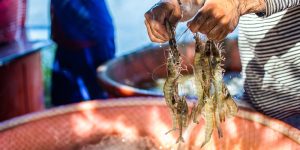
TA-BINDER – coating feed and stimulate catching feed
1. What is the feed conversion factor?
Feed conversion factor (FCR) is understood as the amount of feed (kg) needed for each 1kg of growth of cultured shrimp, calculated by the following formula:

Simplified, if we consider that the stocking shrimp has a total weight of zero, then with an FCR of 1.5, we have to spend 1.5kg of feed to raise 1kg of shrimp. This means that the lower the FCR, the less total feed is consumed, which in turn reduces feed costs as well as reduces environmental pollution. That is why FCR is always one of the top concerns of shrimp farmers because reducing FCR brings not only short-term profits but also long-term benefits.
2. How to improve feed conversion
For vannamei shrimp fed with industrial feed, the FCR is usually 1-1.3 because shrimp have the characteristics of fast eating, flexible movement, and especially when hungry, they will eat detritus. Depending on many different factors such as breed quality, stocking density, water environment, feed quality, shrimp health, etc., this ratio can increase or decrease during the farming process. To optimize FCR, you should note the following issues.
2.1. Choose high quality feed and feed the shrimp properly
Among the factors affecting FCR, feed quality can be considered a decisive factor. To optimize the shrimp’s ability to catch feed as well as absorb nutrients, thereby reducing FCR, people should pay attention to choosing high quality food according to criteria such as:
- Has high digestibility and metabolism;
- Highly enticing, attractive smell;
- Long-lasting in water;
- Sharp cuts, uniform in size, shape and color;
- Smooth appearance, less dust;
- Does not contain impurities, mold, moisture.
Beside that, it is necessary to calculate a suitable amount of food for each stage of development as well as the health status of shrimp and weather conditions and ponds. In order to avoid overfeeding, farmers must also understand the catching characteristics of shrimp to feed properly. Specifically, there are a few things to keep in mind:
- Should divide the amount of food into several meals a day because shrimp have a short intestinal structure and move continuously;
- Should not be fed to satisfy the needs of shrimp, but should only be fed up to 80-85% of the need to
ensure that the shrimp thoroughly absorb nutrients in the feed, and at the same time reduce excess into the environment; - Feed should be spread following the current because shrimp have the habit of swimming upstream;
- Feeding areas should be located away from pond’s waste collection, and at the same time, feed should be spread evenly and thinly to all areas because the area of operation of shrimp is quite large;
- Mix probiotics, biological products into the feed to improve the digestive system as well as increase the natural resistance to improve the survival rate of shrimp;
- It is recommended to use adhesives to keep feed in the water for a long time because shrimp have the habit of picking up feed and scraping it gradually, not eating it all at once.

Proper feeding to reduce FCR and limit water pollution
Proper feeding not only reduces FCR but also limits the amount of organic waste that accumulates and pollutes the water environment. Doing this well will help farmers save a lot of environmental treatment costs and reduce the risk of disease in shrimp, shrimp mortality due to pathogenic bacteria or toxic gases in the pond.
2.2 Selection of good quality breed
In order to increase feed efficiency and reduce FCR, shrimp breed needs to have high quality, healthy, with low mortality and fast growth rate. Therefore, when choosing to buy varieties, farmers need to carefully choose varieties with clear origins from reputable establishments and must have specific certifications for both disease resistance and genetics. Although the price is not the decisive criterion, people should not buy the breed with risk in terms of quality (inbreeding, malformations, disease carriers, stunting, unevenness) because of the low price. will increase the FCR.
2.3 Well pond’s environment management
A well-managed pond environment will help shrimp stay healthy, reduce disease/mortality rates and increase nutrient absorption, thereby reducing feed conversion ratios and improving crop profits.
In order to manage the pond environment well, farmers need to regularly monitor water quality indicators, especially dissolved oxygen content and temperature – two factors that directly affect the ability catching feed and nutrient absorption of shrimp. In addition, it is necessary to strictly control the amount of feed to minimize the amount of organic waste accumulated in the pond.
3. A probiotic that improves FCR from Truc Anh
To help farmers improve the feed conversion ratio, thereby increasing the profit of the crop, Truc Anh BiOTech has successfully researched and produced TA-Binder – a biological product used to coat and increase the adhesive of feed.
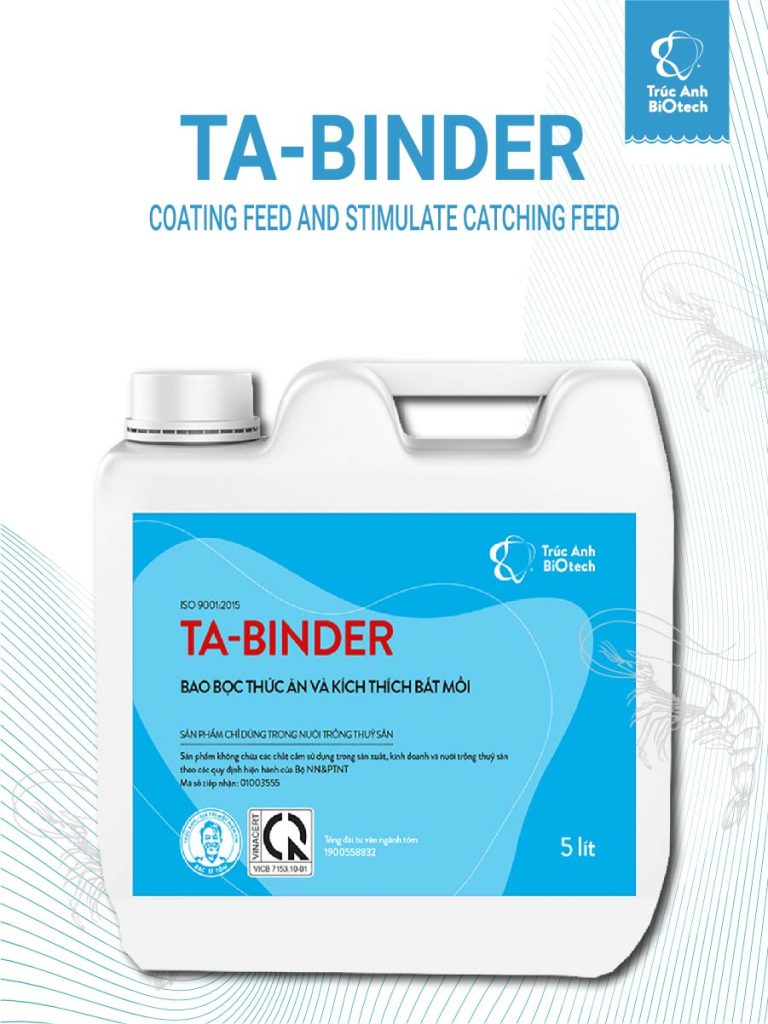
TA-Binder helps the feed stay longer in the water , and creates smell that stimulates shrimp to catch feed
For each 1kg of feed, farmers can use 5-10ml of TA-Binder dissolved with water and mix it with feed for 10-15 minutes before feeding shrimp. If normally, after about 2 hours in the water, the food has started to disintegrating. When adding TA-Binder, the food will keep longer in the water, it takes up to 3 hours to start disintegrating. Not only that, TA-Binder also has ingredients that create an attractive smell, stimulating shrimp to catch feed faster and more than usual, thereby significantly reducing FCR for ponds.

TA-Binder helps the feed stay longer in the water , and creates smell that stimulates shrimp to catch feed
Not only for food, TA-Binder can also be effectively combined with supplements, probiotics, digestive enzymes. While increasing the ability to attract and limit the loss to the aquatic environment, TA-Binder will improve the effectiveness of the supplements, while still ensuring the safety of the shrimp’s intestinal tract many times more than any adhesive products using squid oil or cinnamon paste available on the market.
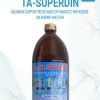


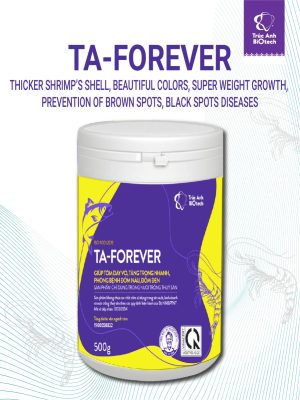
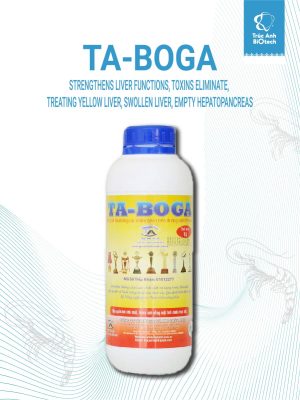
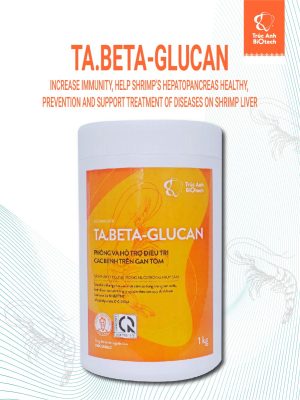
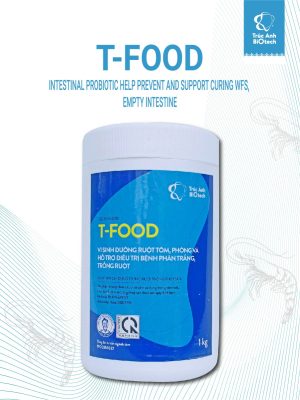
Reviews
There are no reviews yet.